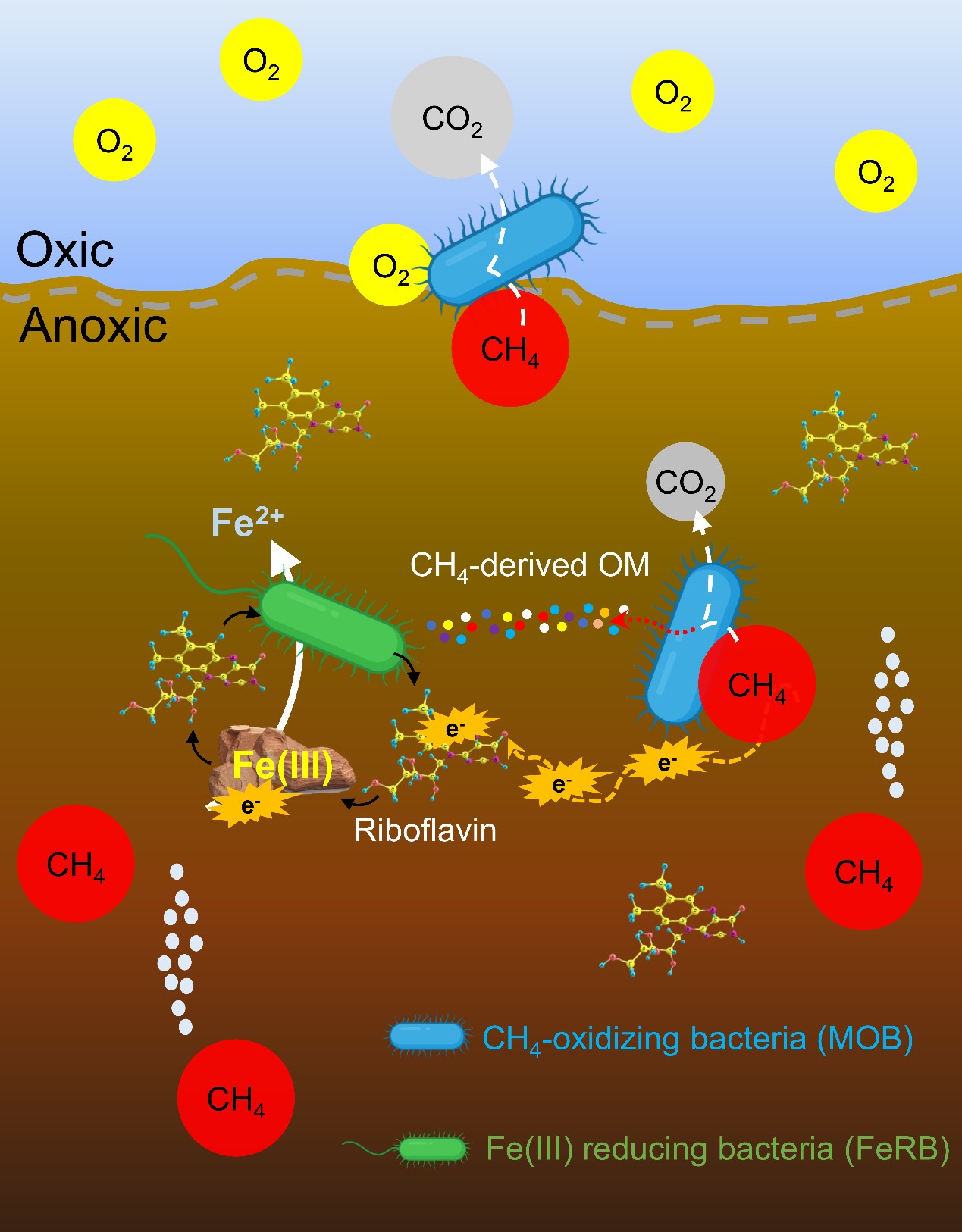Methane (CH4) is a potent greenhouse gas with a global warming potential 28-34 times that of carbon dioxide on a centennial time scale. Microbial CH4 oxidation acts as a biofilter, preventing over 90% of CH4 from entering the atmosphere.
Traditionally, aerobic CH4-oxidizing bacteria (MOB) are O2-dependent to grow on CH4 as their sole carbon and energy source. Increasing studies have shown that MOB are present and even active in anoxic environments, without using O2 as an electron acceptor by them, but their survival strategy and ecological contribution are still mysterious.
Researchers led by Dr. LI Biao from Prof. WU Qinglong's team at the Nanjing Institute of Geography and Limnology of the Chinese Academy of Sciences (NIGLAS), together with their collaborators, have investigated the survival strategies of MOB under anoxic conditions.
Their results were published in Water Research on March 6.
After two years of enrichment, the researchers obtained an enriched consortium dominated by γ-MOB, Methylomonas and several other heterotrophic bacteria, but without anaerobic methanotrophs.
They found that the MOB consortium can couple CH4 oxidation and Fe(III) reduction under anoxia using electron shuttles such as riboflavin. Within the MOB consortium, MOB converted CH4 to low molecular weight organics such as acetate for the consortium bacteria as a carbon source, while the latter secreted riboflavin to facilitate extracellular electron transfer.
"A metabolic flexibility was observed in this conventionally considered O2-dependent microbe, MOB. Given that iron is the fourth most abundant element on Earth and generally abundant in lacustrine sediments, the use of iron oxides as electron acceptors may be a critical lifestyle for MOB and an important CH4 sink on early Earth, where anoxic conditions are ubiquitous," said Dr. LI.
In the in situ anoxic sediments, several types of microbes associated with the consortium, including Methylomonas, were transcriptionally active. In addition, Fe(III) reduction coupled with CH4 oxidation mediated by the MOB consortium reduced 40.3% of the CH4 emissions in the iron-rich sediments.
"There are many iron-rich areas in South China, MOB in these iron-rich areas may play a crucial role in mitigating CH4 emission even under anoxia there. Our study reveals how MOBs survive under anoxia and expands the knowledge of this previously overlooked CH4 sink in iron-rich sediments," said Dr. LI.

Schematic diagram of CH4 metabolism mediated by MOB under oxic and anoxic conditions. (Image by LI Biao)






